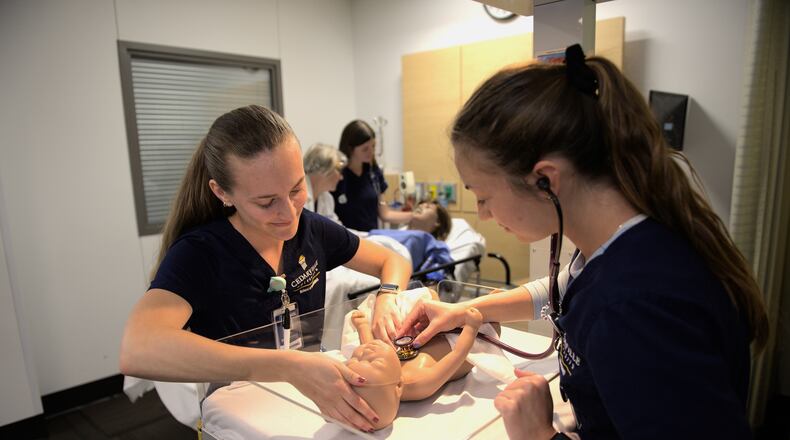“Students spend so much of their time in books and lectures, but simulations give them the opportunity to expand their knowledge base to begin thinking like a nurse,” said Nate Kincaid, assistant professor of nursing. “It makes the classroom come to life in a more practical, real-environment setting.”
The new birthing simulator will be integrated into the Care of Women and Newborns course, which helps “bridge the gap between classroom theory and clinical practice, preparing students for the challenges of maternal and neonatal care.”
“Victoria’s” lifelike features include realistic eye movement and skin texture; faculty can control all vital signs, the baby’s heart rate and the mother’s voice through a laptop interface behind protective glass; comes with a flat belly option, allowing it to be a patient who is an old man, a teenaged girl or whatever the need may be; and is wireless and can be taken into classrooms, unlike the previous one that was purchased in 2012 and was less lifelike.
This new simulator joins two other high-fidelity simulators, which are more advanced where the chest rises and falls, a pulse can be felt and bodily fluids like tears, sweat and vomit can be present. The school of nursing also has 18 moderate-fidelity simulators that allow students to practice hearing breath, lung and heart sounds, changing sheets for bed-ridden patients and performing head-to-toe assessments.
As a way to engage the students with the new mannequins, Kincaid hopes to host a “baby shower” in the fall to give students the opportunity to suggest and vote on names for the new additions to the family of simulators.
About the Author

